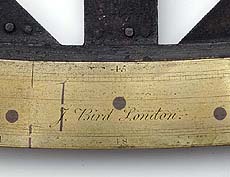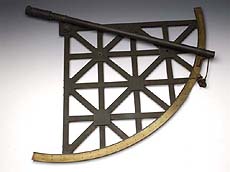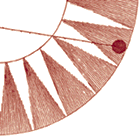On transit expeditions, a portable astronomical quadrant was an essential item of equipment. Those viewing the transit from an established observatory could rely on larger and more securely fixed instruments, such as this mural quadrant.
.
As its name suggests, a mural quadrant was mounted on a wall. Thomas Hornsby used this example by John Bird to determine the latitude of Oxford by observations of the Pole Star. He specifically mentions both the instrument and his latitude value of 51º 45' 15" in his published report on the 1769 transit.
.
 |
 |





